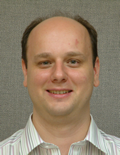
[ppt] [pdf] [print version (pdf)]

 |
The concept of an atom was first discussed by philosophers in ancient Greece more than 2000 years ago. Modern technology has long enabled us to see, use and manipulate atoms. But atoms are not the smalles units in nature. They are built from even tinier particles. Nowadays scientists all over the world are searching for the most fundamental building blocks of nature and for the forces that hold them together. We discuss the particles and forces known to us today and we take a look at some of the huge machines that are necessary to discover new ones. [ppt] [pdf] [print version (pdf)] |
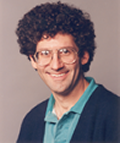 |
Nuclear and particle physicists use a broad range of acceleration and detection tools in their work. All you need to do is walk around your home to see many of these tools and the tricks that make them useful. We'll take that walk together. [ppt] [pdf] [print version (pdf)] |
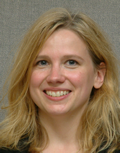 |
Sixty miles away from New York City, scientists from around the world constructed a large accelerator (2.4 miles in circumference), the so-called Relativistic Heavy Ion Collider, RHIC, at Brookhaven National Laboratory. RHIC accelerates heavy atomic nuclei to almost the speed of light and then smashes them into each other. The scientists' goal is to create matter as hot as a million suns! It is believed to have existed in the early universe, a few microseconds after the Big Bang. These tiny blobs of fundamental matter "cook" in the laboratory only for a small fraction of a second, so scientists must develop special probes to gain an understanding of the properties of this matter. A promising probe is the so-called J/Ψ particle, a heavy subatomic particle which is particularly sensitive to changes in the produced medium of the nucleus+nucleus collision. We will discuss how the J/psi and similar "elephants" may help us to discover exciting properties of this novel, ultra-hot form of presumably liquid matter. [ppt] [pdf] [print version (pdf)] [Movie and sound files (tar.gz)] |
 |
From ancient times on men have been wondering where the mass of matter originates from. Only within the last 30 years or so, physicists have discovered that most of the mass is generated by the strong nuclear force which acts between almost massless (light) quarks. The light quarks, however, assemble into massive protons and neutrons, which form atomic nuclei, the building blocks of every-day life matter. Quantum Chromodynamics, the modern theory of the strong interaction predicts that the "strong" force is so powerful that it rearranges the vacuum from an "empty void" into a dense "background". It is the "dense vacuum" which is believed to be at the origin of mass. At the Relativistic Heavy Ion Collider (RHIC) on Long Island (NY), physicists try to "evaporate" the QCD vacuum by smashing together heavy nuclei at the highest available energies. Within the resulting ultrahot matter, the strong force is expected to become weaker, leading to dramatic changes in the particles' masses. We will discuss how these experiments can be used to answer an ancient question. [pdf] [print version (pdf)] |
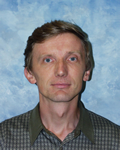 |
Black holes are probably the most mind-boggling objects in the Universe. There are good reasons to think they exist, although direct proof is still lacking. Moreover, it is even not clear what would qualify as a direct observation of an object from which nothing can escape, even light. In this lecture we attempt a crazy plunge into a black hole and observe weird effects due to curved geometry of space and time. After miraculous safe return, we will collect observational evidence for the existence of black holes and identify best black-hole candidates among known objects on the sky. [ppt] [pdf] [print version (pdf)] |
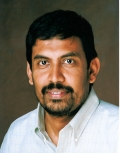 |
What the universe is made of has always been a fascinating question. It is only during the last few years that we have come to know that universe is mostly made out of dark matter and energy. Currently, we have several queries. What are these dark stuffs? Do we know their origin? How can we describe them? Was the universe always like this? [ppt] [pdf] [print version (pdf)] |
 |
In this concluding event, we will give a comprehensive review of the previous six lectures with special attention to the common thread running through the presentations. We will award the final certificates and give an outlook/have a discussion on college/career paths in physics. [ppt] [pdf] [print version (pdf)] |
Back to the Saturday Morning Physics Homepage
Last updated: Mar/31/07
Hendrik van Hees